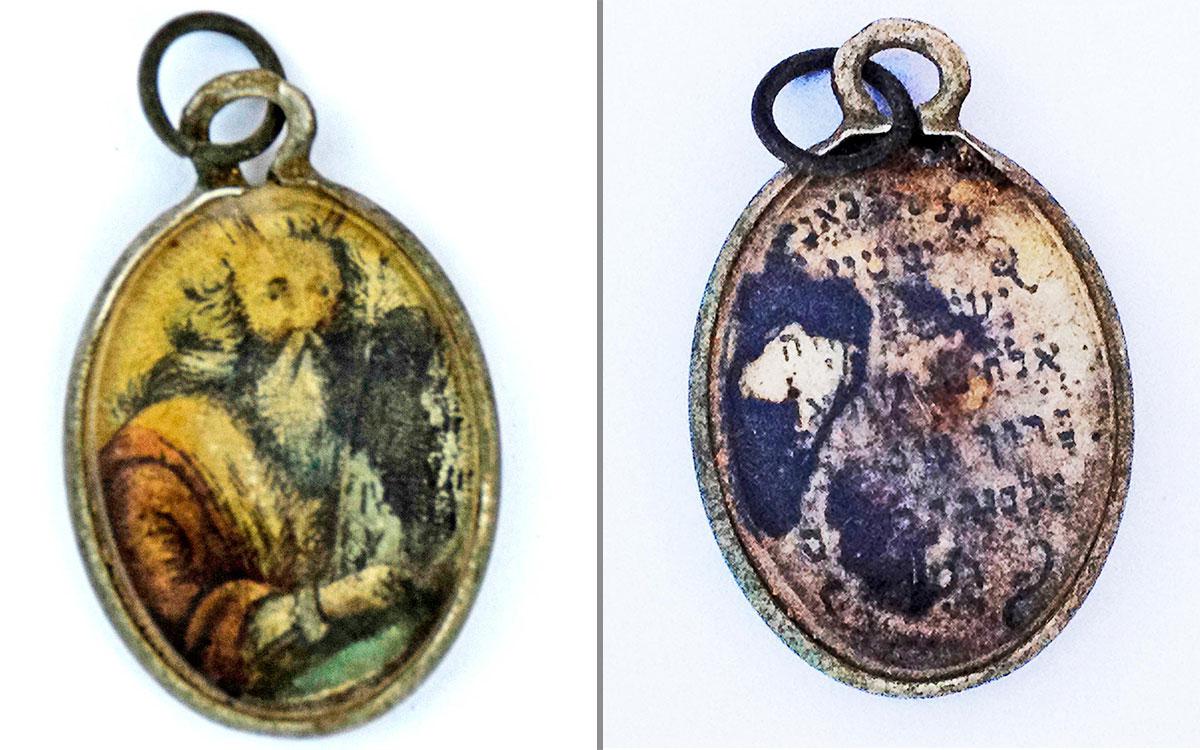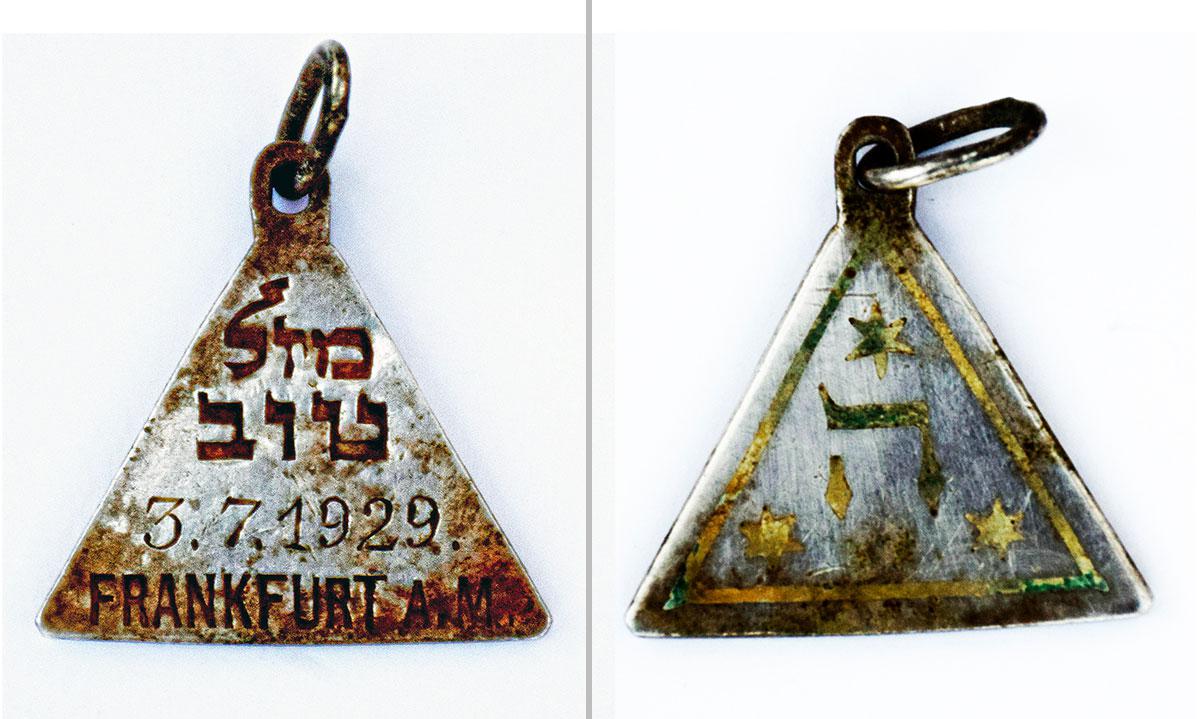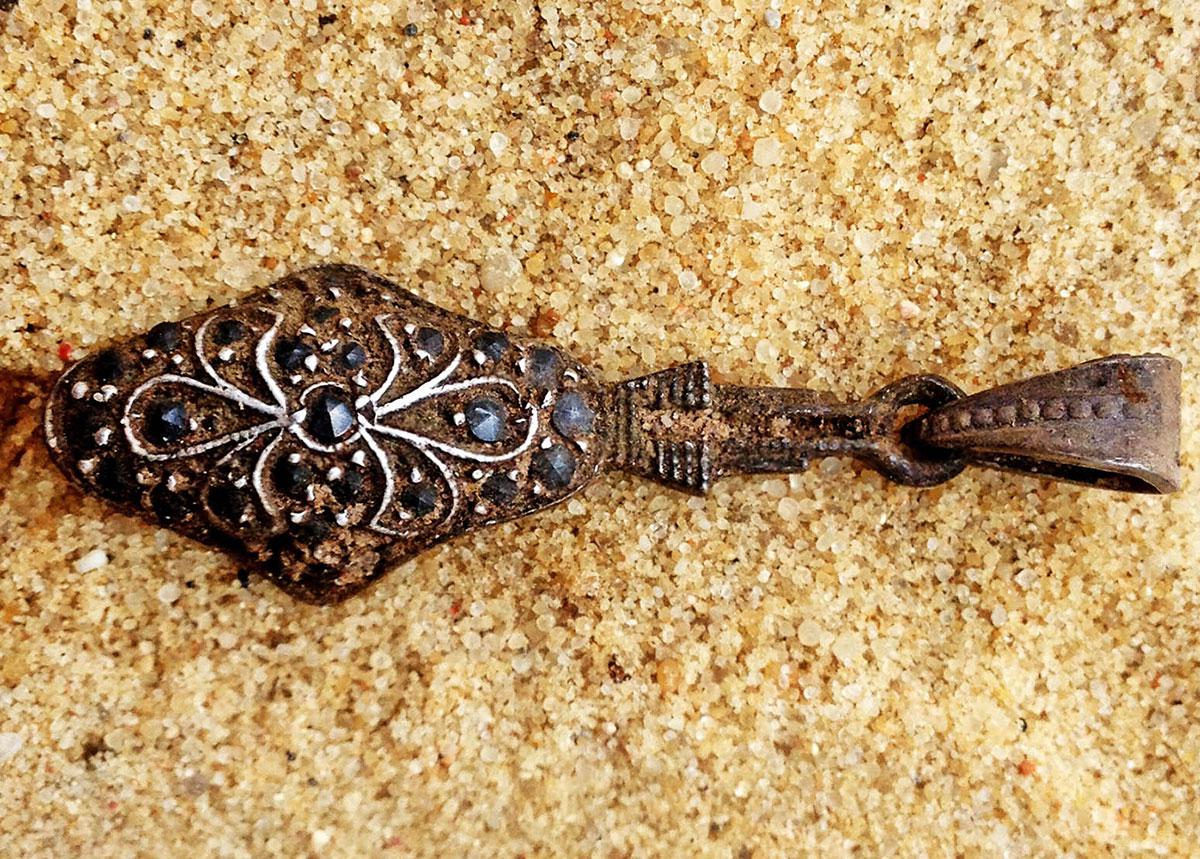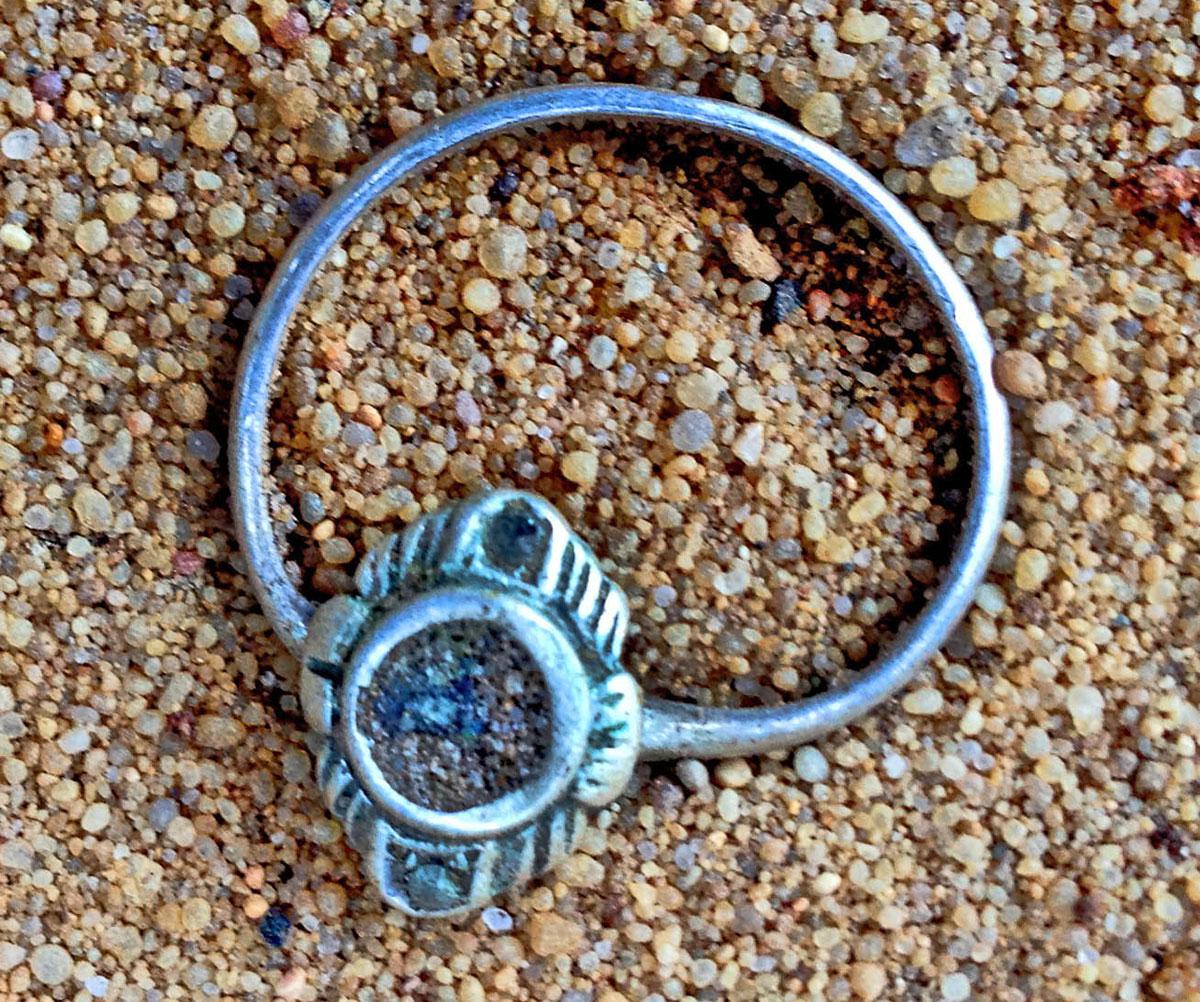
Photo: Yoram Haimi, Israel Antiquities Authority


Photo: Yoram Haimi, Israel Antiquities Authority


Photo: Yoram Haimi, Israel Antiquities Authority


Photo: Yoram Haimi, Israel Antiquities Authority

Searching for the Identity of the Owner of a Pendant Found in Sobibór
For over a decade, Yad Vashem has coordinated excavations at the site of the former Nazi extermination camp, Sobibór. The excavations are conducted by Wojciech Mazurek (Poland), Israel Antiquities Authority researcher and archeologist Yoram Haimi and archeologist Ivar Schute (Holland). Among the discoveries made over the years are the foundations of the gas chambers, the original train platform and a large amount of personal artifacts belonging to the victims, including watches, jewelry, and children's identification bracelets.
In late 2016, the location where victims undressed and were shaved before being sent to the gas chambers was uncovered. The remains of the building unearthed by the archeologists are located on the "Pathway to Heaven," the trail cynically named by the Germans used to force arriving Jews to the gas chambers. The personal items found in the foundations of the building probably fell through the floorboards and remained buried in the ground until they were discovered a few months ago.
Among the personal items found in the area were a Star of David necklace, a woman's watch, and a metal charm covered in glass with an etching of the image of Moses holding the Ten Commandments; on the reverse side of the charm is the inscription of the essential Jewish prayer "Shema." Also found was a unique pendant bearing the date 3.7.1929, the words "Frankfurt AM" and "Mazal Tov" (written in Hebrew) on one side, and on the other side the Hebrew letter "He" (representing God's name) as well three Stars of David.
With the help of Yad Vashem, Haimi was able to speculate to whom the pendant belonged. Through concerted and complicated work, Yad Vashem researchers identified its possible owner as Karoline Cohen, a young girl born in Frankfurt on 3 July 1929. Haimi also checked the population registry in Frankfurt and discovered just one Jewish girl born that day – Karoline Cohn. Dr. Joel Zissenwein, Director of the Transports to Extinction" Deportations Database, a project of Yad Vashem's International Institute for Holocaust Research, found Cohn's name on a list of Jews, deported from Frankfurt to Minsk on 11 November 1941. While it is not known if Cohn survived the harsh conditions in the Minsk ghetto, her pendant reached Sobibór sometime between November 1941 and September 1943, when the ghetto was liquidated and the 2,000 Jewish prisoners interned there were deported to the death camp. There, along the path to the gas chambers of Sobibór, the pendant belonging to Karoline Cohn was taken, dropped, and remained buried in the ground for over 70 years.
Additional research revealed a very similar pendant belonging to another young girl murdered in the Holocaust who was born in Frankfurt and wrote a diary during her time spent in hiding in Holland – Anne Frank. After the discovery of the pendant in Sobibór was widely publicized, Yad Vashem received a number of messages from members of the public who own similar pendants once belonging to family members who were born in Frankfurt.
"These recent findings from the excavations at Sobibór constitute an important contribution to the documentation and commemoration of the Holocaust," said Prof. Havi Dreifuss, Head of the Center for the Research on the Holocaust in Poland at the International Research Institute. "They also help us to understand better what happened at Sobibór, both in terms of the camp's function and also from the point of view of the victims."
According to Yoram Haimi, "the significance of the research and findings at Sobibór only grows with every passing season of excavations. Every time we dig, we reveal another part of Sobibór, find more personal items and expand our knowledge about the camp. Despite attempts by the Nazis and their collaborators to erase all traces of their crimes, as well as the effects of forestation and time, we are gradually enhancing our understanding of the site's history, which was previously known to us only through survivor testimonies. This pendant demonstrates once again the importance of archaeological research of former Nazi death camp sites. The moving story of Karoline Cohn is symbolic of the shared fate of the Jews murdered in the camp. "
The archeological excavations at Sobibór are funded by the Steering Committee for the International Project to Establish a New Museum-Memorial Site in the Area of the Former German Nazi Extermination Camp in Sobibór, in coordination with Yad Vashem's International Institute for Holocaust Research and supported by Tel Aviv University.









